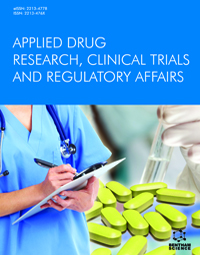Abstract
Background: The normal metabolic functioning of aerobic cells is related to free radical formation. The oxygen utilized in the cell growth gives rise to a number of oxygen free radicals. Further, these oxygen free radicals interact with lipidic molecules to produce hydroxyperoxides and various other peroxides also, radicals like superoxide, hydroxyls, and lipoid peroxides, which lead to cytotoxicity due to their interaction with biological systems. The uncontrolled generation of free radicals may lead to various diseases and disorders like prostate cancer, coronary heart disease and also ageing. The therapeutic potential of the plant M. zapota has been demonstrated in various diseases, such as cancers (e.g., breast, prostate, cervical, and hepatocellular cancer), diabetes mellitus, arthritis, bacterial infections, and gastrointestinal disorders (e.g., diarrhea and ulcers) and many medical conditions. The main phytocomponents of this plant are polyphenols, alkaloids, glycosides, flavonoids, saponins, triterpenoids, carbohydrates, tannins, and sterols.
Objective: The objective of this study is to investigate qualitative analysis and anti-oxidant potential of ethanolic extract of Manilkara zapota (L.) P. Royen Leaves. In demand to minimize the damage caused by free radicals. It is very essential to develop such antioxidants which protect the body from the effect of free radicals and also do not cause much harm to the human body. The main phytocomponents of the plant are polyphenols, alkaloids, glycosides, flavonoids, saponins, triterpenoids, carbohydrates, tannins and sterols which are responsible for antioxidant activity.
Materials and Methods: Phytochemical screening methods, Gas chromatography–mass spectrometry (GC-MS), Fourier transform infrared (FTIR), and Hydrogen Peroxide scavenging assay for analysis of an ethanolic extract of plant leaves.
Results and Discussion: Antioxidant activity was determined by a hydrogen peroxide assay. Plant extract was examined using phytochemical screening, GC-MS analysis, and FTIR spectra. The plant extract showed hydrogen peroxide scavenging activity (IC50 = 16.45 μg/ml) compared to the IC50 values of standard ascorbic acid (IC50 = 9.079 μg/ml).
Conclusion: The present study concluded the antioxidant and phytochemical assessment of the ethanolic extract of the leaves of Manilkara zapota. The results of the present research study demonstrated that the antioxidant activity of the plant extract was strong as compared to ascorbic acid.
[http://dx.doi.org/10.1155/2014/860479] [PMID: 24790705]
[http://dx.doi.org/10.1016/j.bbagen.2009.02.002] [PMID: 19364477]
[PMID: 22568053]
[http://dx.doi.org/10.1016/0278-6915(94)90011-6] [PMID: 8045480]
[http://dx.doi.org/10.1016/S0027-5107(02)00317-2] [PMID: 12628499]
[http://dx.doi.org/10.4103/0974-8490.94723] [PMID: 22518080]
[http://dx.doi.org/10.7897/2277-4343.064102]
[http://dx.doi.org/10.22271/chemi.2020.v8.i2i.8834]
[http://dx.doi.org/10.1371/journal.pone.0183234] [PMID: 28877199]
[http://dx.doi.org/10.4103/0974-8490.91028] [PMID: 22224055]




























